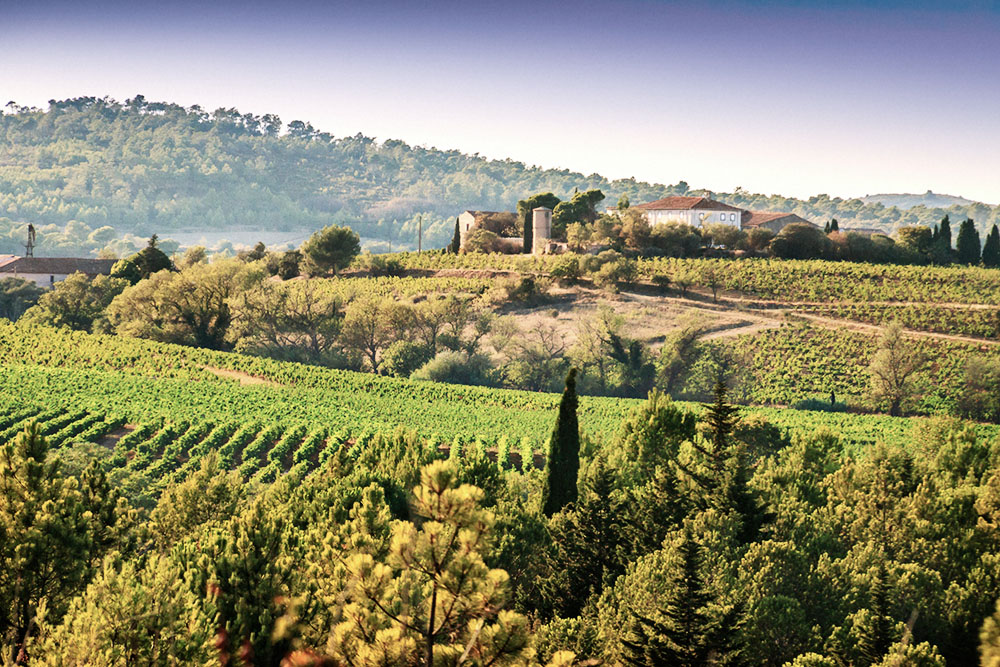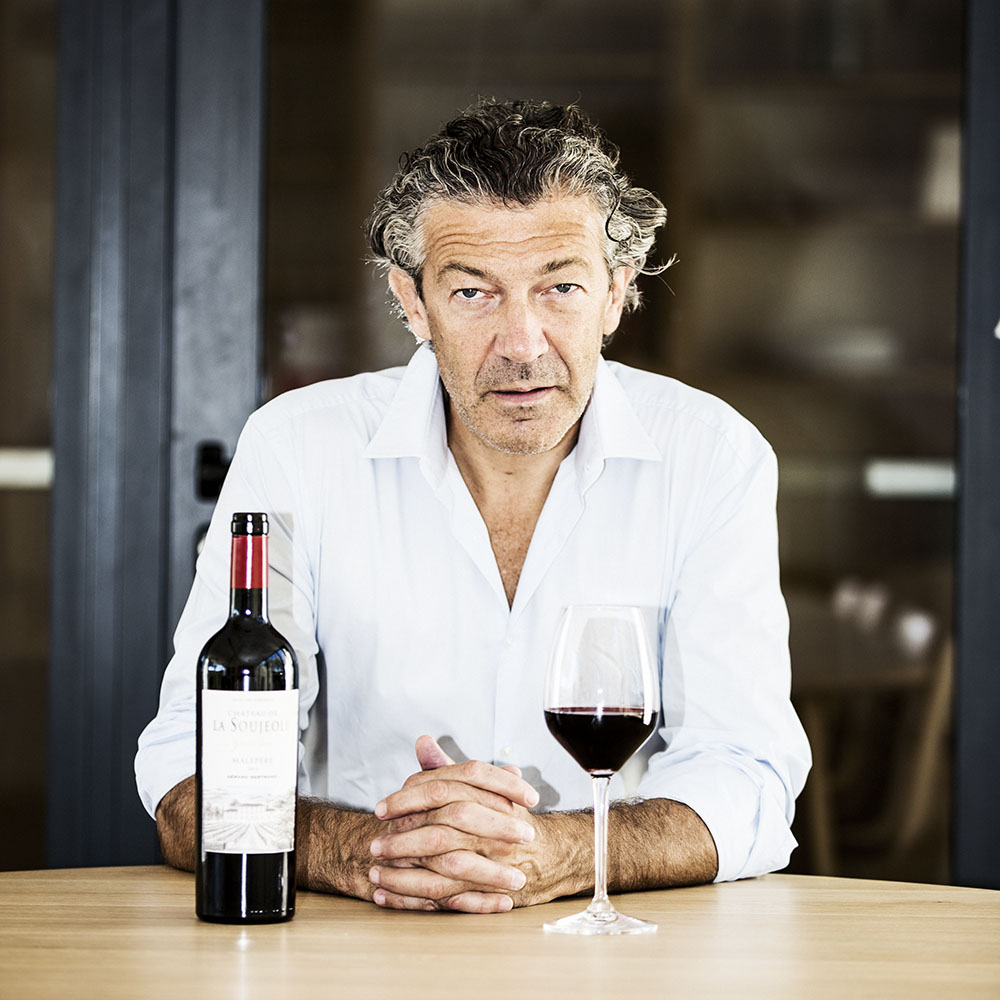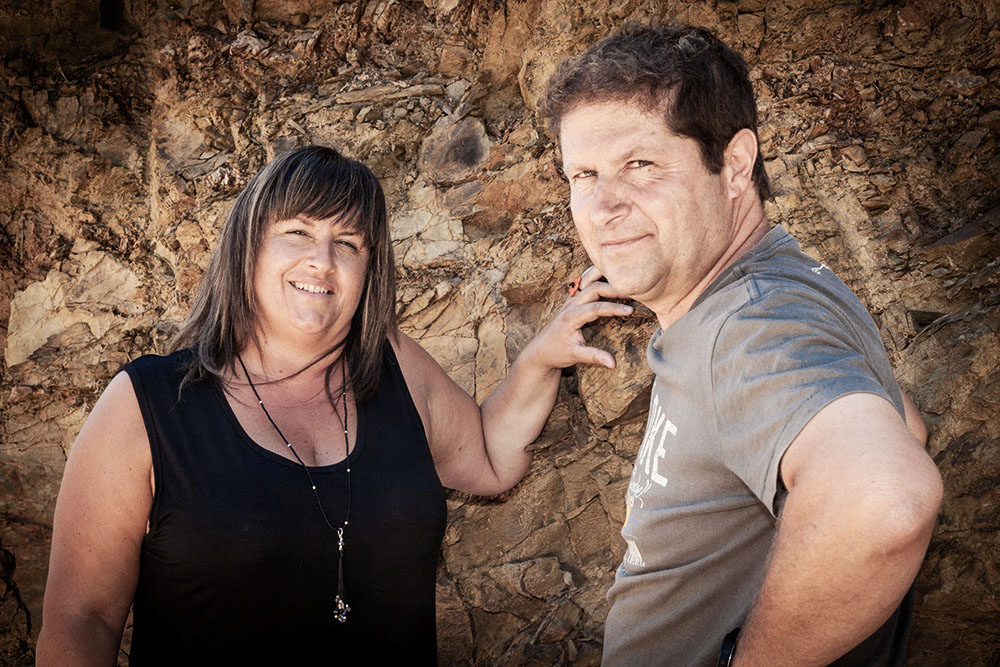
Once celebrated then derided, the South of France’s new star is on the rise.
From across the channel in pre-Chunnel England, France appeared mysterious, somewhat exotic and infinitely more sexy than the UK.
Besides, the French drank wine …
I encountered my first vin de pays in my early teens. I had my first sip during a summer exchange in Charente. It was red wine with dinner and everyone drank it, including a five year old, who had it with a splash of water. This scenario was the reality and the raison d’être of vin de pays. It was workaday wine, usually from the South of France, often Languedoc.
The world has changed since then, and it includes the Languedoc. Staggeringly, the region, which once accounted for roughly 10 percent of the world’s entire wine production, has now emerged as a “serious” wine region.
Roughly one third of French wine still comes from the sun-drenched swath of vineyards that straddles the South of France, nearly stretching from Nimes to Perpignan and the Eastern Pyrenees.
Momentous shifts much in synch with the times are happening in Languedoc. Today almost 30 percent of its production is organic and or biodynamic (and this number is increasing) — arguably the most impressive and lesser-known fact about the region.
It is tough to pin down precisely when Languedoc’s first vines took root, but it is believed that the Phoenicians brought them to France sometime around the 5th century BC. If you look up in the historic town of Roquebrun in Saint-Chinian, you can see high on the steep slope remnants of vineyard terraces among the ruins. By the 14th century the region had become known for its superior quality wines, a reputation that endured for several centuries. Post-phylloxera, the quality of the region’s wines became swamped by the sea of lesser juice, as a product of industrialization. Varieties were chosen for their capacity to deliver the highest yields, rather than their quality.
The “new” Languedoc has slowly evolved over the last 20 to 30 years and is now doing so with increasing speed. Wine quality is ever improving as the region continues to drill down and classify its 37,000 hectares. With 23 AOC appellations, it remains the world’s largest single wine producing appellation. Languedoc (formerly Coteaux du Languedoc) is now divided into five Villages Crus du Languedoc, 10 sub-regions, four sweet wine and three sparkling wine appellations and 19 protected geographical indication areas.
In the background, you can detect a significant momentum among producers to designate (and in some cases separate), with 10 regions and three sub-regions including some that want to be recognized in their own right.
There are definite contenders. A case in point, AOC Languedoc-Sommieres is Languedoc’s easternmost appellation. Just beyond is Costieres des Nimes and the Côtes du Rhone. Its producers have applied to be classified as AOC Sommieres, a Grand Vin du Languedoc.
In Roman times, Sommières was an important crossing. Its restored bridge, which crosses the river Vidourle, dates from 19 AD. Considerably influenced by the Mediterranean and the Mistral, the region features scrubby landscape and shale soils. Syrah and Grenache thrive here.
“In Bordeaux we smell the châteaux, in Burgundy the Pinot, but in Languedoc we smell the Garrigue,” Mas Montel’s Jean-Philippe Granier likes to joke. Granier grows his fruit in rehabilitated vineyards that can be traced back to their Roman origins. His Mas Montel Camp de l’Oste 2016, a blend of Syrah (60%) with equal parts Grenache and Mourvedre, is well-structured, layered with black fruit and earthy notes and well-integrated tannins.
Élisabeth and François Jourdan own one of Sommières oldest estates, Château l’Argentier. It has been in Élisabeth’s family since 1937. François was born in Burgundy and learned winemaking there before moving to Languedoc in 1983. Their 24 hectares includes 2.2 hectares classified in Languedoc Sommières and 5.94 hectares in Languedoc Grès de Montpellier. The flagship Château l’Argentier 2013 (Syrah 70%, Carignan 20% and Grenache 10%) is made with vines aged between 29 to 85. Like all Château l’Argentier’s wines, the flagship wine was fermented and aged in concrete vats, resulting in a fresh but complex character with black fruit and stony hints that reflect the irony and flinty soils.
In regional AOC Saint-Chinian-Roquebrun, Christine Deleuze and her brother Luc Simon run Clos Bagatelle, a historic estate comprising 60 hectares in Saint-Chinian and Saint Jean de Minervois and has has been in their family since 1963. Having planted new vines and modernized the winery, the Deleuzes hand harvest and practice minimal intervention. The wine style is clean and expressive, reflecting the differing limestone, schists, sandstone and calcareous soils. Clos Bagatelle is also working towards a Haute Valeur Environnmentale (HVE), a certification that would recognize their efforts to protect biodiversity, benefitting crops, animals and the surrounding environment.
The domaine was founded in 1623. At this time its coat of arms was a countess wearing armour. Christine Deleuze suggested that this “adventurer woman” is an apt symbol for her family. The vineyards will continue to be passed on from mother to daughter: “Our goal is to grow crops in the cleanest way, so we can hand down the estate to our children,” says Christine. Her family have been preserving Clos Bagatelle’s biodiversity for over two decades.
Over the past few years, regional AOC Picpoul de Pinet has also been more sustainably farmed and enjoying increasing exports. Picpoul is a natural accompaniment to fresh seafood, but its gentle saline edge and acidity make it a shoo-in for oysters— a regional specialty.
Pinet is home to two major co-ops that account for 80 percent of wine production in the appellation. In the vineyards around, vines at least 60 or 70 years’ old are spaced 1.5 metres apart to accommodate horse-drawn work. It is not hard to find reminders of Roman settlement, and “modern” records date back to 1618.
As more sustainable practices are taking hold, growers point to the success of so called “confusion programs” for pests, which have eliminated chemical use. Small pheromone capsules are distributed throughout the vineyard to compete with scents released by the female pest. When the male is unable to find his mate the breeding cycle is interrupted, eventually depleting the population.
Initially, these programs greatly reduced chemical spraying, but now it has been entirely eliminated. This, thanks to the rebound of other beneficial species and the return of a more balanced ecosystem.
As an aside, among the 24 private wineries outside the two principal co-ops, 10 are owned or run by women.
At Domaine Ollier-Taillefer in AOC Faugères, Françoise and Luc Ollier epitomize what is taking place in Languedoc’s smallest but increasingly well-known appellation. This sister and brother duo (locally born winemakers) oversee 30 hectares of steeply sloped schist AOC vineyards, which have been in their family for five generations.
Their parents Nicole and Alain Ollier, who sold their first bottled wine in the mid-1970s, were instrumental toward gaining an AOC decree in 1982 for red and rosé wines.
After attaining organic certification for their wine in 2012, the siblings built a gravity-fed winery and cellar with a “green” roof into a hill, using the region’s porous rock. They make three tiers of AOC reds (Faugères is very much a red wine appellation), including a Grand Reserve blend of Carignan, Grenache and Syrah, which ages very well. Their Allegro, a blend of Vermentino and Roussanne, is a worthy match for local goat cheese. They also maintain the production of an excellent Fine de Faugères, an oak aged eau de vie for which the region was known before table wines.
Arguably no one embodies Languedoc’s transformation more than Gerard Bertrand. Aged 22, he assumed the reigns of his family’s Villemajou Estate in 1987 after his father George lost his life in an auto accident. Bertrand was no stranger to wine, however. He experienced his first vintage in 1975 and worked alongside his father for the 12 years thereafter.
George Bertrand was among the early Occitans to reject bulk wine production in favour of using the region’s indigenous varieties to make quality wine. He was also the first in the region to put wine in barrels rather than tanks, in the 1970s.
An international rugby star who played for France, Gerard Bertrand drew on his game skills and doggedly competitive nature to build the business and change the industry at large. Today his company manages 15 estates, of which 12 are either already farmed biodynamically or on their way. He is also setting the pace for burgeoning wine tourism. He has 3-star Chateau l’Hospitalet — a restored 16th-century building, now a destination hotel and conference centre in the heart of the biodynamically farmed vineyards.

Gérard Bertrand was among the early occitans to reject bulk wine production in favour of using the region’s indigenous varieties to make quality wine.
Today, Languedoc is immersed in rediscovering and revitalizing its historic, eminently more quality-driven wine culture. The region’s energy flows from a rugged determination not only to reconnect with the land but also respect its use and nurture and preserve its integrity for future generations.
Languedoc’s ability to shift gears from quantity to quality so quickly is quite remarkable. Through a sea change in vineyard management technique and viticulture, the industry now boasts yields of between 40
In Languedoc, you can see attention to detail and terroir driving quality at every turn. In matters of wine, change traditionally happens slowly and is fiercely resisted. But this is not so in Languedoc, where change is constant and enthusiastically embraced.

Sainte Lucie d’Aissou Bella Dama AOC Corbières Boutenac 2016 ($28)
From a 40 ha. domaine dating from 1869, passionately stewarded by the dynamic Jean-Paul Serres. A blend of Carignan (50%) and Grenache (50%). Allowing the grapes to hang just past ripeness rewards with vibrant red fruit up front, before a plush, layered and textured palate with elegant mouthfeel defined by supple and well-integrated tannins.
Domaine la Bouysse Cuvée Mazerac AOC Corbières Boutenac 2015 ($30)
Siblings Martine Pages and Christophe Molinier are fourth generation vignerons overseeing an estate (biodynamic since 2013) that dates back some 115 years. Concrete fermented, with the Carignan whole bunch pressed, aged 12 months in French oak. Aromas of dried fruit with earthy undertones before a mouthfiiling palate supported by firm tannins.
Chateau de Nouvelles Gabrielle AOC Fitou 2017 ($40)
From Languedoc’s oldest appellation. Second year into biodynamic conversion. A blend of 46% Carignan and 30% Grenache with 10% Syrah, from 70 year old vines, grown on schist soils with 12 months in barrel, one third new oak. Up front red berries and spice notes followed by a generous palate wrapped in firm but approachable tannins before a lengthy end.
Cascastel Dedicau AOC Fitou 2017 ($50)
This blend of Carignan (45%), Grenache (30%) and Syrah (25%) yields up front vibrant red berries, toasty oak and spice notes before a plush palate of raspberry, blackberry and black pepper wrapped in approachable and well-integrated tannins through a mouth-filling finish.
Les Sentiers de Bagatelle Donnadieu St Chinian AOC 2017 ($20)
A blend of Syrah (50%) with Mourvèdre (20%), Grenache (15%) and Carignan (15%) grown on ideal, poor Schist soils at includes 50 year old Grenache and Carignan bush vines. Hand harvested with fermentation up to one month, aged in large oak. Upfront black fruit and garrigue followed by cassis and cherry notes with spice and herb hints, wrapped in well-structured but approachable tannins.
Domaine Florence Alquier Rieutord AOC Faugeres 2017 ($35)
Blend of 50% Syrah and 30% Carignan (30%) with 15% Grenache and 5% mourvèdre. Forward red berry notes with floral and slate hints followed by a well-balanced palate, generous mouthfeel with seamless tannins above definite schist through the lengthy finish.
Domaine de Cebene Felgaria AOC Faugeres 2015 ($64)
Predominantly Mourvèdre with a little Syrah. Lifted red and black fruit before a structured but elegant palate of cassis and spice notes wrapped in approachable fine tannins through a lingering close.
Ollier Taillefeur Allegro AOC Faugères 2018 ($22)
A outstanding blend of Vermentino (Rolle) and Roussanne invites with seductive floral notes and orchard fruit before a generous but focused palate of pear, citrus and honey, underpinned by keen minerality.
Domaine Mirabel Les Eclats AOC Pic Saint Loup 2017 ($35)
Forward black fruit with spicy hints precede a plush, mouth-filling palate of blackberry, mulberry, cassis and anise, with well integrated tannins and a generous, lingering close.
Domaine de Virgile Joly Virgile Rouge AOC Languedoc Saint Saturnin 2014 ($30)
From organic pioneers Virgile and Magdalena Joly. A blend of old vine Grenache, Syrah and Carignan, hand-picked, aged in concrete and oak casks. Forward black fruits and spice with mocha notes before a palate black cherry and spice wrapped in plush tannins and peppery hints.
Les Vignerons de Florensac AOC Picpoul de Pinet 2018 ($22)
A selection of grapes from better sites around the appellation, all close to the Mediterranean. Night harvested before cold fermentation in stainless steel and aging four months on lees. Forward citrus and stone-fruit notes before a palate of grapefruit and peach pit with a hint of salinity wrapped in moderate acidity before a fresh finish.
Cave de l’Ormarine AOC PicPoul de Pinet 2018 ($18)
One of the region’s longest established grapes, with records back to 1618, The Picpoul variety (as in ‘Pique Poule) is named for the tingling sensation it can have on your lips. Upfront orchard fruits and citrus before a palate of lemon and green apple with a fresh and lively finish.
Domaine La Siraniere AOC Minervois la Livinière 2014 ($30)
A blend of mainly Syrah (78%) with Grenache (15%) and Carignan (7%) from a boutique producer, only 4 hectacres, grown on south facing slopes in the foothills of Siran in Minervois. Grenache and Syrah with old vines Carignan were hand harvested and cold fermented in stainless steel, 15 months in French oak. Vibrant, inviting notes of red and black fruit with a plush and spicy palate wrapped in approachable and well-integrated tannins, before a lengthy velvet close.
